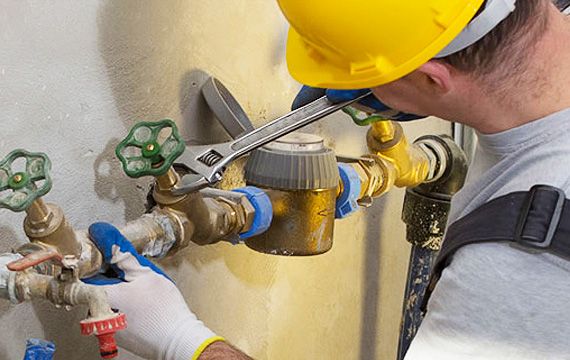What Are The Three Types Of Plumbing?
Plumbing is an essential aspect of modern living, encompassing a complex system that ensures the smooth flow of water and waste in our homes and buildings. Without it, life as we know it would be drastically different. But did you know there are three primary types of plumbing systems? In this article, we're diving deep into the world of plumbing to answer the question: What Are The Three Types Of Plumbing? Whether you're a homeowner, a budding plumber, or simply curious about how things work behind the scenes, we've got you covered!
What Are The Three Types Of Plumbing?
When discussing plumbing systems, it’s crucial to understand that they can generally be classified into three categories: water supply plumbing, drainage plumbing, and venting plumbing. Each type serves a unique purpose but works together to create an efficient plumbing system.
1. Water Supply Plumbing
Water supply plumbing is arguably the most recognizable type of plumbing. It’s responsible for delivering clean, potable water from various sources—such as municipal systems or private wells—into our homes.

1.1 Components of Water Supply Plumbing
Here are some key components involved in water supply plumbing:
- Pipes: These can be made from various materials such as PVC, copper, or PEX.
- Fittings: Connectors that help change directions or connect different sections of pipes.
- Valves: Essential for controlling water flow; this includes shut-off valves and pressure relief valves.
- Fixtures: Sinks, toilets, showers, and other outlets where water is used.
1.2 How Does Water Supply Plumbing Work?
Water travels through a network of pipes under pressure to reach your faucets and fixtures. When you turn on the tap, you’re opening a valve that allows water to flow through the pipe directly into your sink or showerhead.
1.3 Importance of Water Supply Plumbing
Without reliable water supply plumbing, accessing clean drinking water would be nearly impossible. This type of plumbing is vital for sanitation and overall health in Helotes and beyond.

2. Drainage Plumbing
While water supply plumbing focuses on bringing clean water into your home, drainage plumbing does the opposite—it removes wastewater from sinks, toilets, showers, and other fixtures.
2.1 Components of Drainage Plumbing
Essential elements include:
- Drain Pipes: Typically larger than supply pipes to accommodate waste.
- Traps: Designed to prevent sewer gases from entering the home while allowing wastewater to flow freely.
- Cleanouts: Access points in the drainage system that make it easier to clear clogs.
2.2 How Does Drainage Plumbing Work?
Wastewater flows downhill through gravity-driven drainage pipes toward either a septic tank or city sewer system. Traps ensure that no unpleasant odors escape back into your home.
2.3 Importance of Drainage Plumbing
Effective drainage systems are critical in preventing flooding and ensuring proper sanitation in any community—including Helotes! A well-functioning drainage system helps keep homes safe from sewage backups and other issues.
3. Venting Plumbing
Venting may not be as visible as water supply or drainage systems but plays an equally important role in maintaining your home’s plumbing health.
3.1 Components of Venting Plumbing
Key components include:
- Vent Pipes: These extend from the drainage system through the roof.
- Vents: Allow air into the system to balance pressure within drainage pipes.
3.2 How Does Venting Plumbing Work?
Venting keeps air circulating within your pipes so that wastewater can flow smoothly without creating vacuum pressure which could lead to slow drains or backups.
3.3 Importance of Venting Plumbing
Proper venting prevents dangerous sewer gases from entering your living space while ensuring efficient drainage throughout your home—the unsung hero of your entire system!
Conclusion: The Interconnectedness of Plumbing Systems
Understanding what these three types of plumbing are—water supply, drainage, and venting—gives homeowners valuable insight into how their houses function daily. Each part plays its role but relies on others for overall efficiency and safety.
FAQs About The Three Types Of Plumbing
1. What materials are commonly used in plumbing systems?
Common materials include copper for water supply lines due to its durability; PVC for drain lines because it's lightweight; and PEX for its flexibility and resistance to freezing.
2. How do I know if my plumbing needs repairs?
Signs may include slow drains, leaking faucets, discolored water, unexpected spikes in your water bill, or strange noises coming from your pipes.
3. Is regular maintenance necessary for my home's plumbing?
Absolutely! Regular inspections can prevent costly repairs down the line by catching issues early before they escalate into major problems.
4. Can I perform my own plumbing repairs?
While minor tasks like replacing a faucet might be doable for DIY enthusiasts, more intricate jobs should ideally be left to Helotes Texas plumbing experts professionals—especially when dealing with local codes or extensive repairs.
5. What should I do if I have a clogged drain?
Start with a plunger; if that doesn’t work try using a plumber's snake or natural remedies like baking soda followed by vinegar before calling a professional if needed.
6. How often should I inspect my home's plumbing?
An annual inspection is typically recommended along with checks after any severe weather events such as heavy rainstorms which could impact drainage systems significantly.
Final Thoughts
Now that you've explored what are the three types of plumbing—water supply, drainage, and venting—you can appreciate how each component contributes to keeping our lives running smoothly here in Helotes! Remember: regular maintenance goes a long way in preserving these essential systems so you can enjoy all the comforts that modern living has to offer!